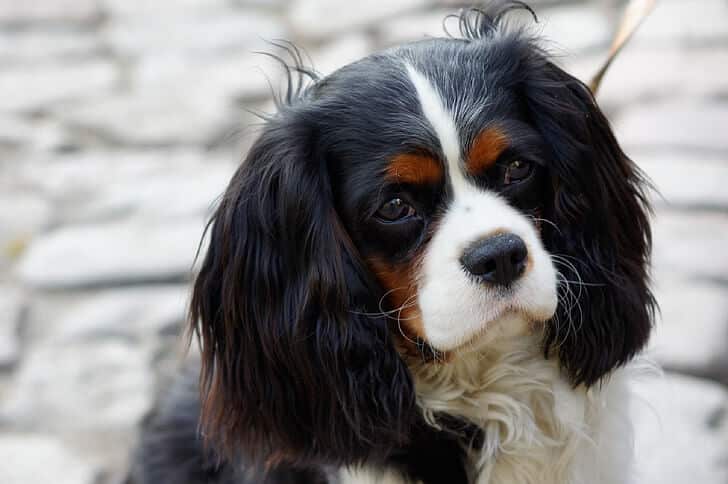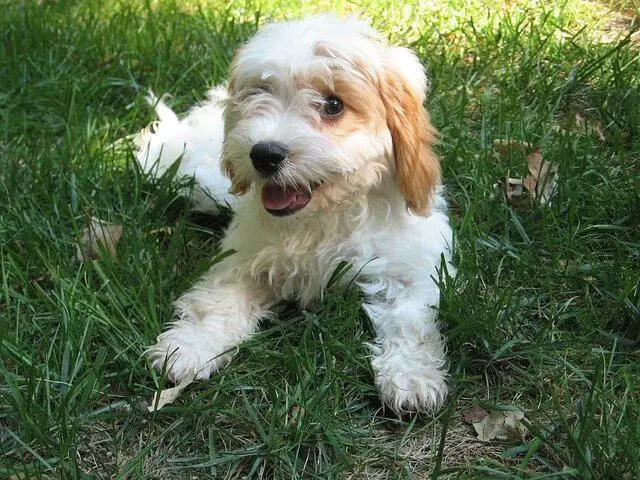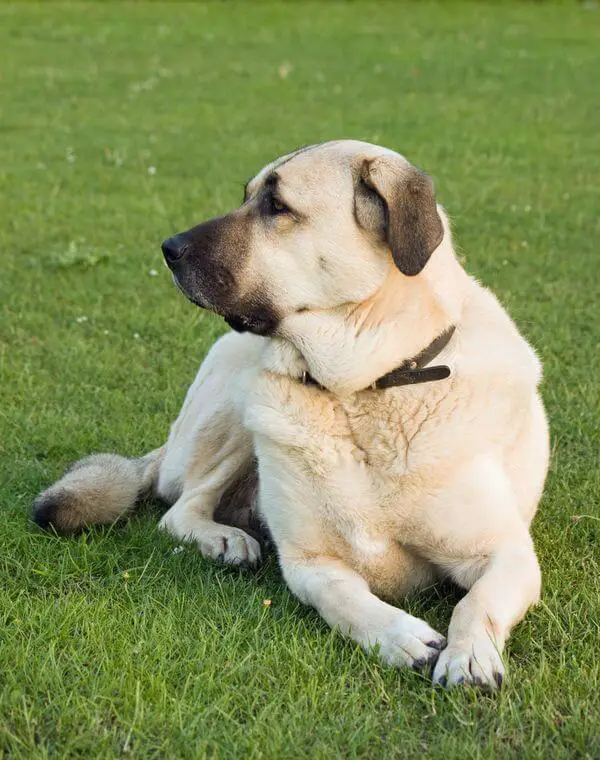German Spitz
The German Spitz is an attentive, lively and robust little dog. This breed comes in two sizes – the Klein, or small, and the Mittel, which is slightly larger. The German Spitz is both a standardized breed of dog in some dog clubs, and a general category of dog including both Pomeranians and Keeshonds. The three breed types have many physical and behavioural similarities.
The German Spitz have teddy bear brown eyes, a black nose and small, pointy, close-set ears like a fox. They have a mane-like collar of fur surrounding their head and a gorgeous coat with a soft, short undercoat and a long fibrous topcoat. Their big bushy tail curls elegantly over their back. Coats come in a variety of colours including black, white, cream, gold, black and tan, sable, chocolate/brown and wolf grey.
This is a highly intelligent dog, with a keen sense of hearing and excellent eyesight. The German Spitz is easy to train but certainly not just a chilled-out lap dog. They would much rather run circles around you and pounce on their toys than sit down and snuggle in for a long movie. If you are in the market for a compact, and devoted companion, that will be a keen watchdog and daily exercise companion, then a German Spitz should be on your list.
German Spitz Key Information
Height: 12-15 inches
Weight: 24-26 pounds
Life span: 13-15 years
Breed family: Foundation Stock Service Program
Exercise requirements: Medium
Good with children: Yes
Area of origin: Germany
Also Known As: Spitz, German Spitz Mittelspitz, Deutscher Spitz
History
Suspected to originate during the first Stone Age, in an area around Germany and Poland called Pomerania, The German Spitz is considered to be one of the oldest dog breeds from central Europe. The history of the German Spitz is entwined with that of the Pomeranian and Keeshond. References of the German Spitz can be found dating as far back as 1450 AD when Count Eberhard Zu Sayn of Germany pronounced that this canine was a courageous protector of the home and fields. Fishermen would take their Spitz dogs on boats to use as watchdogs for their haul. Farmers of the time would also use these dogs to alert about impending intruders.
There is no doubt that the German Spitz was originally a working peasant’s dog; however, they garnered popularity within the English aristocracy from the 18th century when George I rose to the throne. George I had a German wife and thus many German visitors, some of whom brought with them their Spitz dogs. Later, Queen Charlotte, the wife of George III, and Queen Victoria were also dedicated admirers of the breed.
There was a decline in the breed’s popularity following World War I; however, the breed has seen a resurgence since the 1970s and are particularly popular in Australia, the UK and Germany. German Spitzes are still quite rare in the United States; however, as the breed is now on the Stock Registry Service, they are soon to be recognized by the American Kennel Club which will likely increase their appeal.
Personality
Interaction with Children
German Spitzes are a smaller breed and by size alone may not be the best dog for small children. The dog can be harmed unintentionally by boisterous play and thus may be better for a family will older children in the house. Saying that, all small children should be closely monitored when interacting with any breed of dog. If a small child is taught how to properly interact with the pet, then German Spitzes can make excellent, lively family companions.
Interaction with other pets
A German Spitz has an innate prey drive and thus is not a good mix with smaller pets such as birds, lizards or often even cats within the same household. This breed does need early and consistent socialization as they are not naturally fond of other animals, including dogs. They will generally not take well to being introduced to a new household animal once they are an adult and would prefer to be a solo pet. They will relish in being the centre of attention in your home and do not necessarily need interaction with other pets.
Feeding
German Spitz puppies will require two meals a day, up to about one year of age. Always buy a high-quality pet food that is specially formulated for the size and metabolism of your pet. A German Spitz is a small breed, with a lot of energy, but they are prone to weight gain. It is best not to free feed this breed, but to limit their meals to one feeding a day, or if you prefer, two smaller servings spaced morning and evening.
Food Allergies
Food allergies are not commonly found in a German Spitz; however, if they occur, then diagnosing them can be quite difficult. Food sensitivities, on the other hand, are slightly more common and result in a gradual reaction to particular ingredients, generally beef, egg, wheat, lamb, fish, soy, or pork. Look out for reactions such as itching, foot, and/or ear infections, vomiting, or diarrhea.
It can be difficult to know what may be causing these reactions in your pet, therefore it is always best to consult your veterinarian before drastically altering your dog’s diet. You can start by restricting all allergens and then slowly reintroducing them into the diet one at a time, noting any effects.
Care
Bringing a German Spitz into your life can be a great pleasure but, as with any dog, you need to ensure you look after them properly to keep them in the best possible health.
Grooming
German Spitz dogs have a double coat which requires brushing every few days throughout the year to keep away any mats or knots. Twice a year, this breed will completely shed their undercoat and require at least daily brushing to remove the old hair. During this 2-3-week span, expect to have dog hair everywhere in your home and an automatic vacuum cleaner will certainly come in handy during this period. At other times of the year, this breed will only shed quite minimally.
It is best never to clip the hair of this breed. As well, limit baths to once per month so as not to strip the coat of essential oils. Any loose dirt can rather be taken out with a wire comb or bristle brush.
Nails
In general, you should never hear your dog’s nails on your floors, and if you do, then it is time for a trim. Trimming nails every two weeks, or at least monthly, should do the trick. Dogs naturally have sensitive paws and feet and are wary of having them touched so it is best to have nail trimming part of the normal grooming routine from an early age to make it a less stressful experience.
Exercise
German Spitzes require only a moderate amount of daily exercise. They will happily go for long and extended walks but are content with a good 30-45-minute daily outing. This is a very inquisitive little dog and will head out on any adventure if the opportunity arises; ensure that the yard is secure and that your dog is on a lead at all times if outside of a fenced area.
In addition to their daily walk, a German Spitz will happily be exercised indoors and their strong prey drive makes them ideal for games and chasing toys.
Training
German Spitzes are a very intelligent breed but these little guys can be stubborn and therefore need consistent training. They generally learn quickly and are very eager to please their owner. Motivational training techniques and small treats will work wonders. Though this a robust dog for their size, they are still a small and fragile breed so aggressive or punishing training methods should never be used.
It is important to ensure early socialization with your German Spitz, as this breed is naturally wary of both human and animal strangers. In addition, it is best to curb their natural desire to bark; teaching the ‘quiet’ command early and crate training will be very beneficial. This breed does will with mini agility training and obedience training.
Housing
German Spitzes do better in slightly colder climates, rather than warmer ones, due to their double coat. They are a breed better suited to being the only household pet but besides that, they are rather easy-going and carefree. Before bringing home your German Spitz, it is recommended to purchase a high-quality pet food for a small dog, an appropriately sized kennel crate, a bristle brush and a wire pet comb as well as canine nail clippers.
Apartments
German Spitzes can make excellent apartment dogs. They are small in stature and do not necessarily require their own yard to roam in. They do require at least a brisk half hour to 45-minute daily walk for exercise but besides that, they will happily be entertained and tired out by playing with soft or chew toys within your apartment. This breed makes an excellent watchdog, and they will quickly alert you to any newcomer; however, they do also tend to be yappy. Early socialization should assist with this, and we would also highly recommend crate training, particularly for apartments.
Dog Houses / Kennels
German Spitzes are a small breed and though they have a longer coat, and will do better in cooler temperatures than many small breeds, they still are not meant to live outdoors or in a dog house full time, regardless of the weather. This breed is prone to barking, and could even be called yappy. As such, we recommend crate training. Crate training is not, and should never be, used as a punishment. In fact, a crate should be seen as your dog’s safe space, their place of comfort, of solitude, a place to sleep and find refuge. Once you have successfully crate trained your canine, they should voluntarily want to go to their crate for quiet time. Crate training ensures that should you need to be away from home, your dog is less likely to bark or destroy your home. They will also be much easier to travel with, or take for veterinary appointments.
Leaving them alone
German Spitzes tend to be destructive when bored. Ideally do not leave them alone for more than four hours at a time and ensure that they have toys to keep themselves entertained. Successful crate training will be very beneficial for when you need to leave your dog alone for a few hours.
Health
German Spitzes are an overall healthy little breed. Their long breeding history and active lifestyle works in their favour in this regard. Saying that, there are a few issues to take note of with regards to their health and it is best to look out for the following conditions: progressive retinal atrophy, retinal dysplasia, patellar luxation, epilepsy and collapsing trachea. The main issue often affecting German Spitzes, and other smaller breeds is oral health care. You can greatly combat future dental issues by consistently brushing their teeth daily and ensuring that their teeth are regularly checked by your veterinarian.
As with any dog breed, the best way to ensure a healthy pet is to buy from a reputable breeder that breeds for both temperament and health, as well as physical characteristics. Keep up with regular vet checks and immunizations from the time your dog is a puppy into their later years.
Older age
In general, German Spitzes are a healthy breed which can be expected to have a long and active lifespan. The breed is known for putting on weight in later years, as they become less active, and their diet should be adjusted accordingly. Regular veterinary check-ups throughout the lifespan of your canine will greatly assist in maintaining health later in life.
Allergies
German Spitzes have a thick coat and shed; therefore, this breed is not a good choice for allergy sufferers.
Wrapping up
The German Spitz is a robust, intelligent, little dog which will make an excellent addition to a household that would prefer to have a singular pet. This intelligent and loyal dog will be comfortable in an apartment or smaller home and does not require a yard, though if one is available then it most certainly should be fenced to maintain this escape artist. If you are looking for a smaller, easy to groom pet that will happily join you on your daily walk around the block, and provide for hours of comedic fun and games indoors, then a German Spitz should be a breed to consider.
We have tried to ensure that the information on this page is as accurate as possible. If you see any mistakes please let us know through our Contact Us page.








